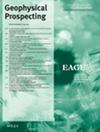Seismic Fault Detection Using Dual-Attention Multi-Scale Fusion Networks With Deep Supervision
Abstract
Fault interpretation is crucial for subsurface resource extraction. Recent research has demonstrated that deep learning techniques can successfully detect faults. However, the network's prediction results still suffer from discontinuity and low accuracy problems due to insufficient exploitation of the spatial and global distribution characteristics of faults. This paper presents a novel approach for seismic fault detection using a dual-attention mechanism and multi-scale feature fusion. The proposed network uses ResNeSt residual blocks as encoders to extract multi-scale features of faults. During multi-scale feature fusion, a global context and a spatial dual-attention module are introduced to suppress interference from non-fault features. This improves the ability to detect faults. Five adjacent seismic slices were used as inputs to obtain the spatial distribution characteristics of faults. Data augmentation methods were used to enrich the fault morphology of synthetic seismic data. The Tversky loss function was used in the proposed model to alleviate the effect of data imbalance on fault identification tasks. Transfer learning methods were also used to evaluate the model's performance on field data from the F3 block in the Dutch North Sea and field data from the New Zealand Great South Basin. The model's performance was compared with some state-of-the-art methods, including DeepLabV3+, Pyramid Scene Parsing Network, Feature Pyramid Network and U-Net. The results show that the proposed fault detection method has excellent accuracy and fault continuity.

 求助内容:
求助内容: 应助结果提醒方式:
应助结果提醒方式:


